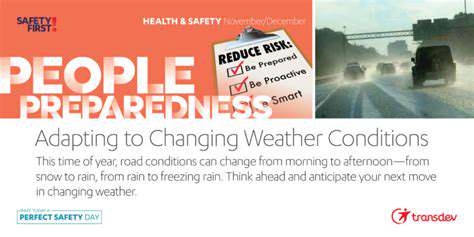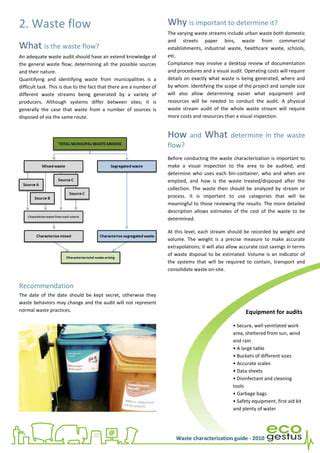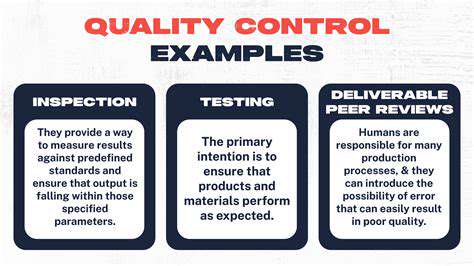Pre-Trip Inspection
Before embarking on your mountain adventure, a thorough vehicle inspection is crucial. This isn't just about checking tire pressure and fluid levels; it's about anticipating potential issues at higher altitudes and on winding mountain roads. Inspect all lights, wipers, and turn signals to ensure they're functioning correctly. A properly functioning vehicle is a safer vehicle, and that's paramount in the mountains.
Pay close attention to your brakes, as they're vital for maintaining control on steep inclines and declines. Ensure adequate brake fluid levels and have them inspected if necessary. Properly inflated tires are key for traction and stability, and that's especially important on uneven mountain roads. Don't forget about checking your spare tire, jack, and lug wrench to be certain they're readily available and in good working order.
Essential Supplies
Packing the right supplies can significantly enhance your mountain driving experience and increase your safety. Include a first-aid kit, a fully charged cell phone or satellite communicator, and a comprehensive emergency kit. This kit should include jumper cables, a flashlight, extra batteries, and a blanket or tarp for unexpected situations. A basic tool kit is also necessary for handling minor mechanical issues on the road. Consider a high-quality map or GPS device, especially for less-traveled mountain routes.
Understanding Mountain Weather
Mountain weather can change rapidly and unpredictably. Be prepared for sudden downpours, hail, or even snow, even in the summer months. Check the weather forecast before you leave and be aware of potential road closures or restrictions due to inclement weather. Understanding local weather patterns specific to the mountain range you're driving in is crucial for your safety and planning.
Keep an eye on the forecast throughout your trip, as conditions can vary significantly between mountain passes and valleys. Having a plan B, in case of unexpected weather changes, is essential. Be prepared to adjust your route or postpone your trip if necessary. Understanding potential weather challenges is a key part of safe mountain driving.
Tire and Wheel Preparation
Mountain roads often have challenging terrain, so ensuring your tires are appropriate for the conditions is vital for safety. Consider all-season or dedicated winter tires if you're driving in mountainous areas where snow or ice is possible. Proper tire inflation is critical for stability and traction, especially on winding roads and gravel surfaces. A properly inflated tire is much safer than one that is under-inflated.
Additionally, inspect your wheel alignment and ensure that your spare tire is in good condition and properly mounted. Knowing how to change a tire in a timely manner is a valuable skill for mountain driving, and preparedness is key to avoiding delays and potential safety concerns.
Vehicle Maintenance and Fuel
Mountain driving can be strenuous on your vehicle, so maintaining its condition is paramount. Ensure your vehicle is properly maintained with regular oil changes and filter replacements, and carry a sufficient amount of fuel, especially if you're driving on less-traveled routes. Plan fuel stops and locations in advance to avoid getting stranded.
Navigation and Route Planning
Before heading out, research your route thoroughly. Use GPS or maps to plan your route and identify potential hazards, such as sharp turns, steep inclines, and narrow sections of road. Familiarize yourself with any road closures or construction zones. Understanding the terrain will help you plan better for the drive and anticipate any difficulties.
Knowing the location of emergency services, roadside assistance, and potential rest stops along your route is also crucial. This preparation will help you stay safe and comfortable throughout your mountain driving experience.
Navigating the Descent: Controlled Braking and Gradual Shifting
Understanding Controlled Braking Techniques
Controlled braking is crucial for safe mountain driving. It involves gradually reducing speed rather than slamming on the brakes, which can lead to loss of traction and potential skidding on uneven surfaces. Properly modulating the brake pedal allows you to maintain control and anticipate changing road conditions. This technique is especially important when descending steep inclines, as rapid deceleration can be destabilizing.
Anticipating potential hazards, like curves or sudden changes in the road's incline, is key. Adjusting your braking pressure accordingly ensures you maintain a safe and stable speed, preventing uncontrolled deceleration and allowing for timely adjustments to steering and gear selection.
Mastering Gradual Shifting
Smooth gear changes are essential for maintaining control while descending. Rapid shifting can disrupt the balance of the vehicle and create instability, particularly on steep inclines. Selecting the appropriate gear for the current speed and incline allows for a more controlled descent, reducing the risk of uncontrolled acceleration and maximizing traction.
Consider the steepness of the slope and the prevailing road conditions when choosing your gear. Downshifting progressively, matching engine braking with the grade, minimizes the need for heavy braking and maximizes the effectiveness of controlled descent techniques. This approach helps maintain control and avoid potentially dangerous situations.
The Role of Engine Braking
Engine braking is a powerful tool for controlling speed during descents. By downshifting, you engage the engine's resistance to rotation, which slows the vehicle's momentum without relying solely on the brakes. Effectively utilizing engine braking reduces brake wear and allows for more precise control over the vehicle's speed, especially on long, winding mountain roads.
Understanding how engine braking interacts with the terrain is vital. In certain conditions, like extremely steep inclines or slippery surfaces, engine braking alone may not be sufficient. This is where controlled braking becomes a crucial complement to engine braking, allowing for a controlled and safe descent.
Adapting to Different Terrain
Mountain roads present a wide range of terrain, from winding curves to sharp inclines and narrow passes. Understanding the characteristics of the specific terrain is vital for choosing the most appropriate braking and shifting strategies. Learning to anticipate the demands of the road ahead allows you to adjust your driving style proactively, ensuring a safe and controlled descent.
Different types of surfaces, such as gravel, loose dirt, or ice, require specific handling techniques. Recognizing the subtle changes in the road's texture and condition allows you to react appropriately, minimizing the risk of loss of control. Practicing in various conditions is essential to developing the necessary skills for navigating different mountain terrains.
Vehicle Maintenance and Safety Considerations
Proper vehicle maintenance plays a critical role in safe mountain driving. Ensuring your brakes are in optimal condition, tires are properly inflated, and fluids are at the correct levels are essential for maintaining control, especially in challenging conditions. These preventative measures are vital to avoid unexpected issues during a descent, which could compromise your ability to maintain control.
Carrying necessary safety equipment, such as emergency flares, chains, and a first-aid kit, is also crucial. Understanding how to use these tools in an emergency situation can significantly enhance your safety and the safety of others on the road. These preparations, combined with a deep understanding of controlled braking and shifting techniques, allow you to confidently navigate the challenges of mountain driving.
AI algorithms can analyze real-time data from various sources, including weather patterns, air traffic density, and aircraft performance, to dynamically optimize flight paths and schedules. This proactive approach significantly reduces delays and fuel consumption by selecting the most efficient routes and adjusting flight times to account for changing conditions. The ability to anticipate potential issues and proactively adjust flight plans leads to smoother operations and a more predictable travel experience for passengers.













